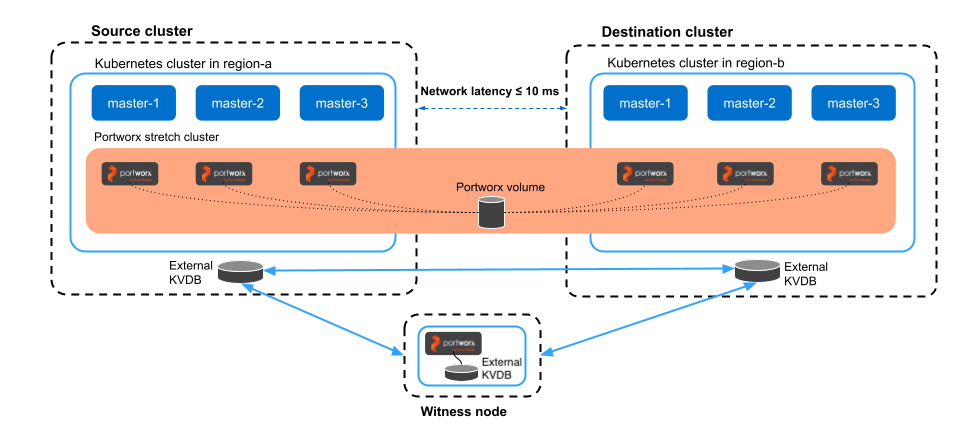Synchronous disaster recovery in airgapped bare metal
To deploy Synchronous DR (also known as Metro DR) setup, you need to install a single stretched Portworx cluster across two clusters. A single Portworx clusters spans across an on-premise environment with a maximum latency of 10 ms.
The following diagram shows a synchronous DR setup involving two clusters in the same metropolitan area network:

This document explains how to install a stretched Portworx cluster and achieve synchronous DR. It will demonstrate how to failover and failback applications between two clusters.
- Cluster-wide operators are not migrated as part of a DR migration if it is not installed in the same namespace as the applications you want to migrate. As a result, after migration, you will not be able to scale up or down your applications on the destination cluster using
storkctl. - Synchronous DR is supported only on Vanilla Kubernetes with vSphere cloud drive configurations.
- In a Synchronous DR setup,
- The maximum supported replication factor is
2. - The sharedv4 service volumes are not supported in the Portworx cluster.
- KubeVirt VMs are not supported.
- The maximum supported replication factor is
Perform the following steps to set up synchronous DR:
📄 Prerequisites
Prerequisites for Synchronous DR migration.
📄 Prepare your cluster
Find out how to install a single stretched Portworx cluster across multiple Kubernetes clusters.
📄 Setup a witness node
Find out how to install a witness node.
📄 Generate and apply a cluster pair spec
Find out how to pair your clusters.
📄 Schedule a migration
Find out how to synchronize your clusters by scheduling periodic migrations between them.
📄 Failover an application
Find out how to failover an application from one Kubernetes cluster to another.
📄 Failback an application
Find out how to failback an application from the backup Kubernetes cluster to the original one.